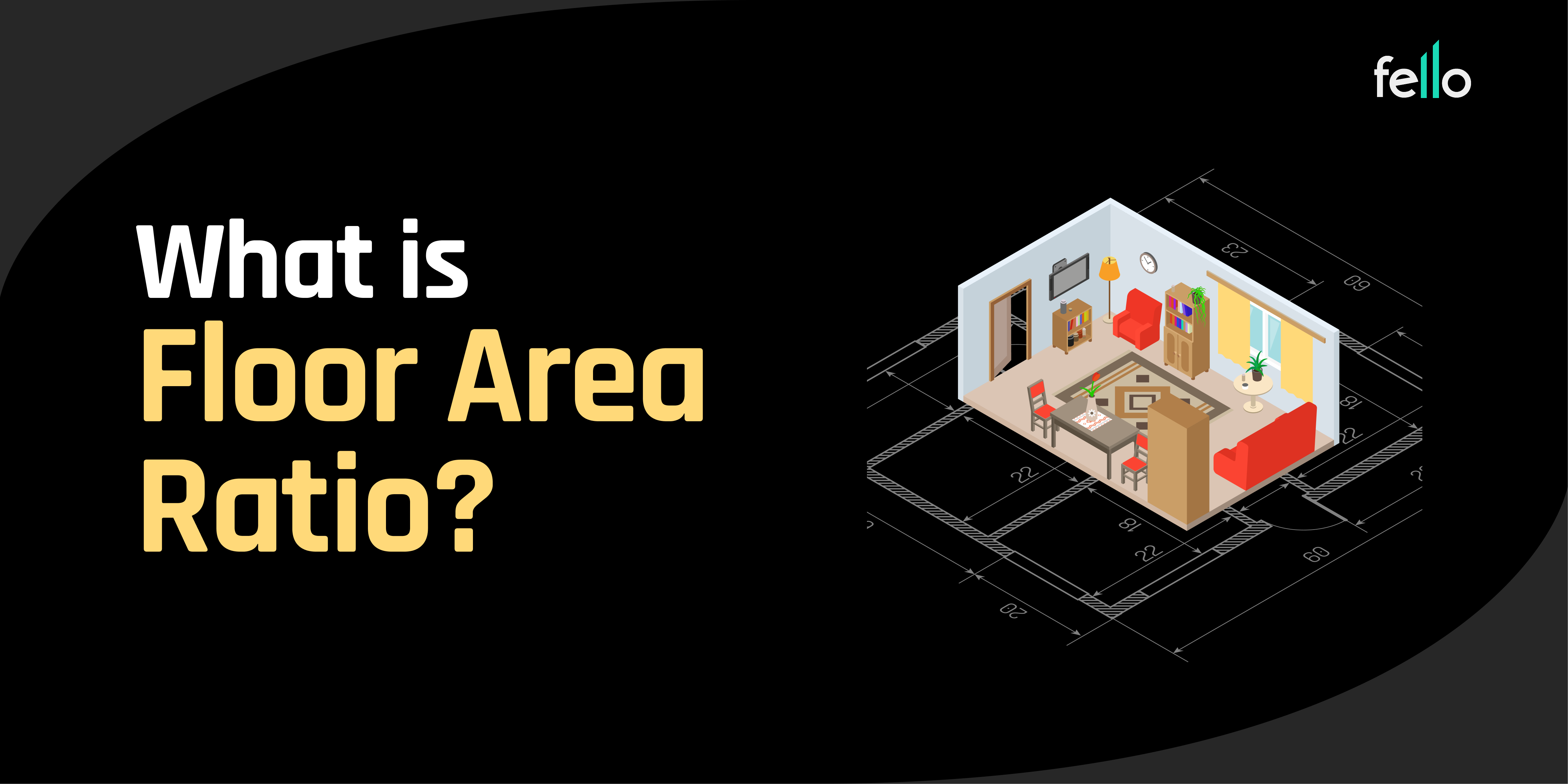FAR (Floor Area Ratio) is the ratio between the total built-up floor area of a building and the size of the plot on which it is constructed. It acts as a regulatory measure used by urban planning authorities to control building density, skyline height, and infrastructure load.
In simpler terms:
FAR = Total built-up floor area / Plot area
Let’s take an example:
If you own a 1,000 sq. meter plot and the permitted FAR is 2.0, you can build up to 2,000 sq. meters of floor space. You can spread that space across multiple floors, for example, four floors of 500 sq. meters each.
Why Does FAR Matter?
FAR is more than just a formula; it’s a tool that influences:
- Urban development density
- Property pricing
- Investment viability
- Environmental sustainability
Here’s a quick comparison table to understand how FAR impacts real estate planning:
| FAR Value | Construction Allowed | Ideal For | Impact on Property Value |
|---|---|---|---|
| 1.0 | Low-rise buildings | Suburban or low-density zones | Lower resale/rental value |
| 2.0 | Mid-rise buildings | City outskirts and mixed zones | Moderate property appreciation |
| 3.5+ | High-rise structures | Urban centers and metro corridors | High ROI potential, denser living |
FAR Across Major Indian Cities
The Floor Area Ratio isn’t the same across India. It is regulated by local municipal bodies and differs depending on:
- Zone (residential, commercial, industrial)
- Location (urban vs. rural)
- Infrastructure (metro proximity, road width, etc.)
Here are some average FAR values across Indian metros:
| City | Avg. Residential FAR | Notes |
|---|---|---|
| Delhi | 1.2 – 3.5 | Redevelopment policies allow higher FAR in old zones |
| Mumbai | 1.33 – 5.0 | Varies with location and infrastructure incentives |
| Bengaluru | 1.5 – 3.0 | Dependent on road width and development zone |
| Gurgaon | 1.5 – 2.5 | New sectors allow more FAR to support high-rise living |
| Hyderabad | Unlimited in some zones | Based on road width rather than a fixed cap |
Note: Developers often purchase additional FAR rights through Premium FAR schemes in metros like Mumbai and Delhi.
FAR and Its Impact on Property Buyers & Investors
- Higher FAR = More Construction Potential
Investors and developers closely track FAR to assess how much value a plot holds. Higher FAR allows for multi-storey apartments, which generate more rental or sale income per sq. meter. - FAR and Real Estate Prices
New infrastructure like metros or expressways often drives up FAR in certain areas, leading to a price surge as development potential increases. - FAR Compliance is Crucial
Builders exceeding the approved FAR risk legal penalties, demolition, or delayed possession. Always ensure the project is RERA-approved and follows local FAR norms. - Better Amenities Through FAR Optimization
Developers strategically use FAR to provide more units while also leaving room for amenities like parks, clubhouses, and commercial shops within gated communities.
FAR vs FSI – Are They the Same?
Yes, FAR (Floor Area Ratio) and FSI (Floor Space Index) are terms often used interchangeably in India. The only difference is that FAR is typically expressed as a decimal (e.g., 2.5), whereas FSI may be stated as a percentage (e.g., 250%).
Common Misconceptions About FAR
- “More FAR is always better” – Not necessarily. High FAR areas may have higher density, traffic, and pressure on utilities.
- “FAR is fixed for every plot” – FAR depends on zone classification, road width, and local building bylaws.
- “FAR doesn’t impact homebuyers” – Wrong! FAR impacts apartment size, density, resale value, and even your home’s natural light.
Global Perspective: How FAR Works Internationally
In cities like Singapore and New York, FAR plays an even more significant role. In fact, some US cities auction unused FAR to neighboring properties. This model ensures optimal land use and revenue for city planning.
Dubai, on the other hand, has flexible FAR rules in master-planned communities, which encourages vertical construction while maintaining green cover.
Conclusion: What is FAR?
What is FAR? It’s the unsung rule that shapes your home, neighbourhood, and city skyline. For developers, it determines profit. For investors, it influences returns. And for buyers, it affects everything from apartment size to legal safety. Whether you’re building, buying, or investing, understanding FAR is key to making smarter real estate decisions.
FAQs
Q: How does FAR affect resale value?
A: Higher FAR areas tend to have better ROI due to greater construction potential.
Q: Is it legal to build beyond FAR?
A: No. Overbuilding leads to fines, litigation, or demolition unless officially regularized.

